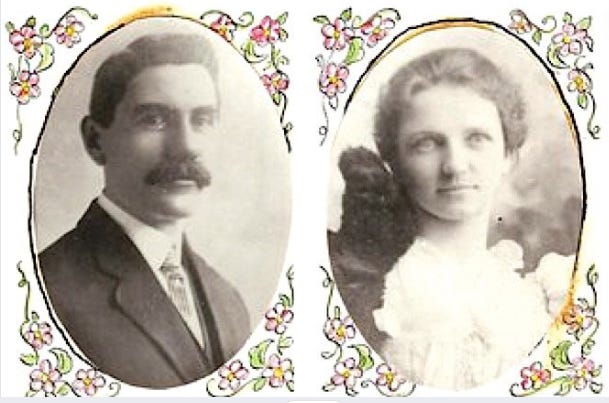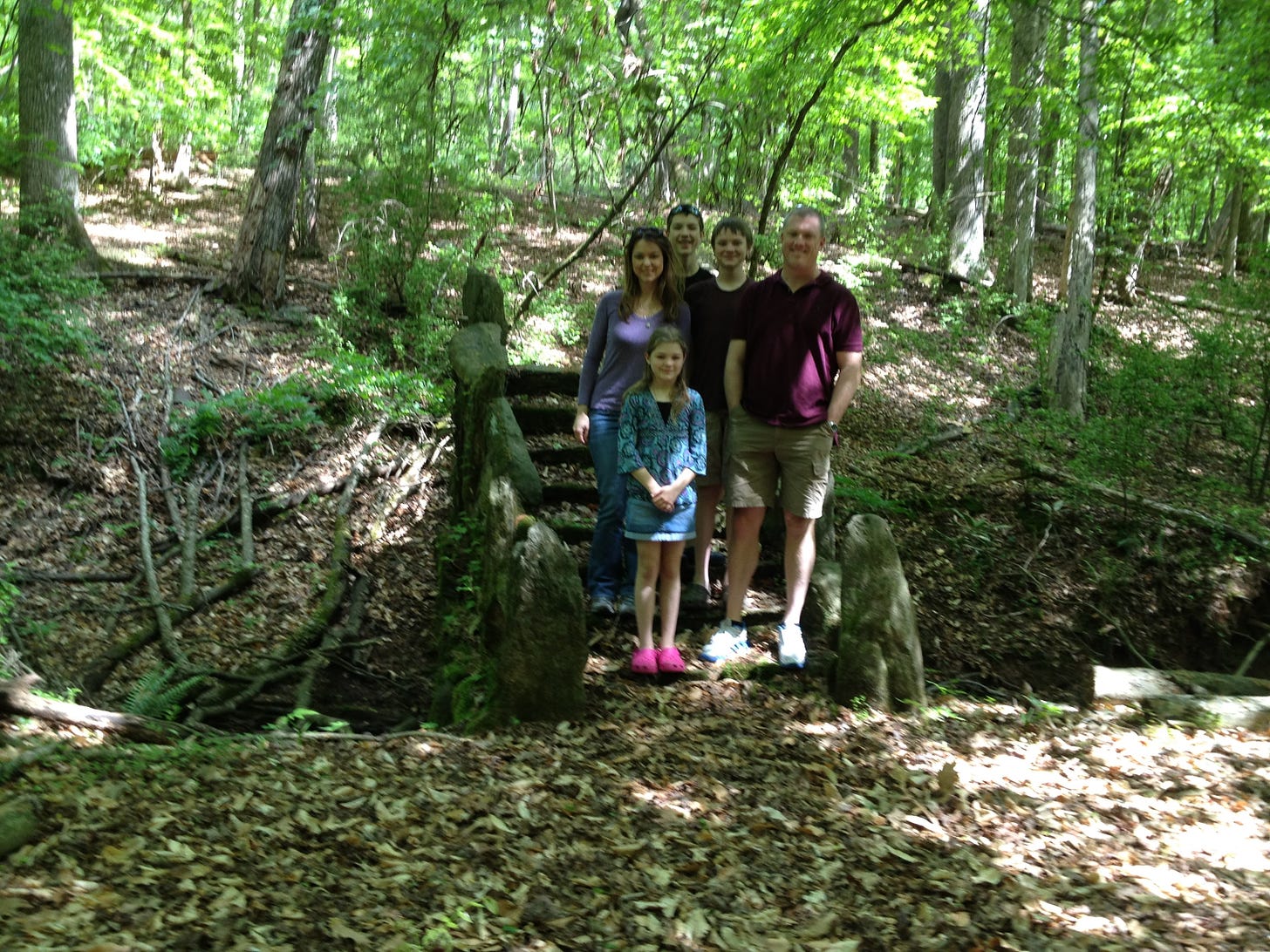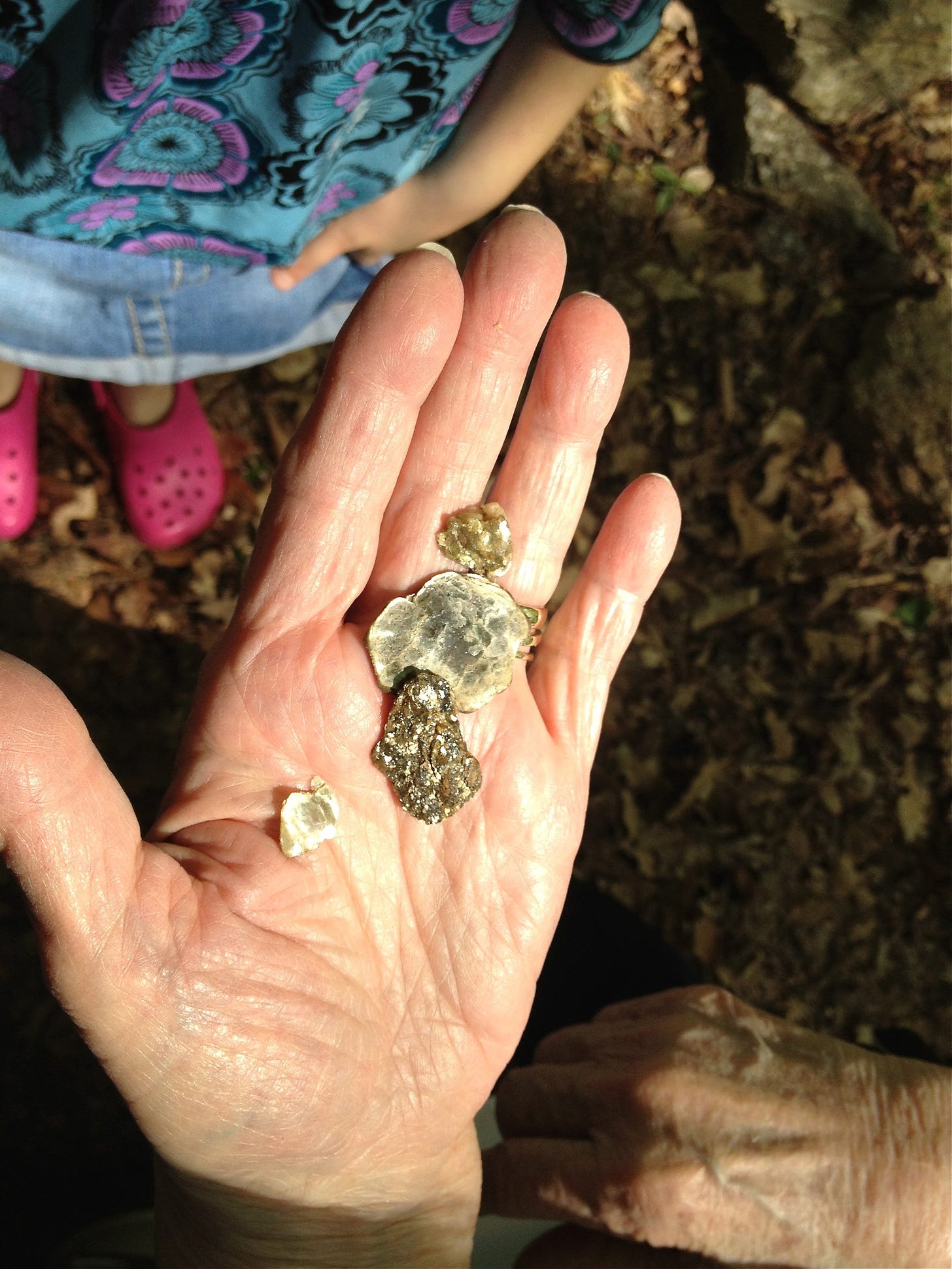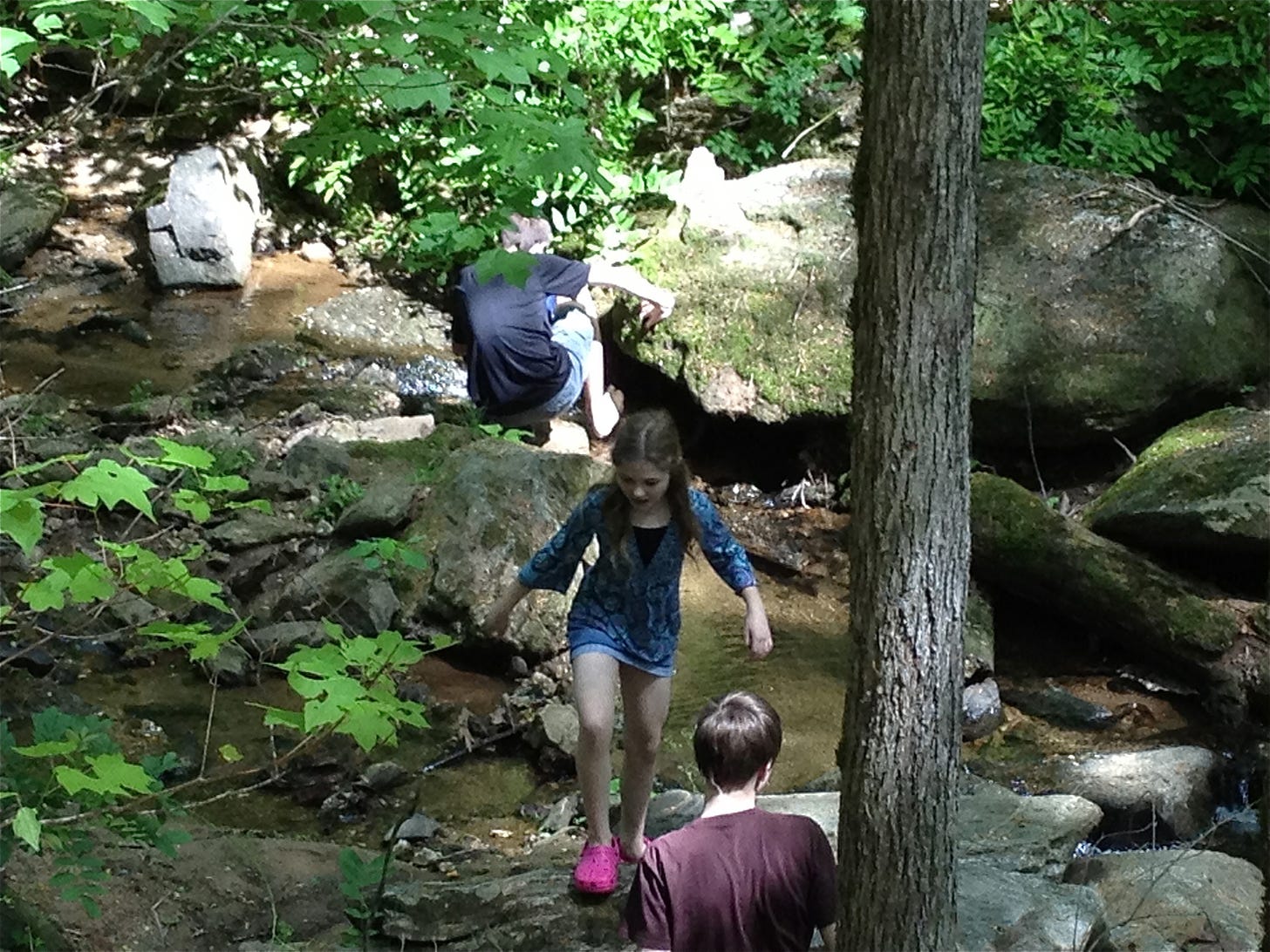Charles Alden Rowland II was born July 17, 1870 in Augusta, Georgia. He moved to Athens in 1887, where his brother, William, was living in a boarding house while attending the University of Georgia. Charles joined the YMCA and, later, the Classic City’s social circles. Not long after that, during a party at the home of R.L. Moss on Cobb Street, Charles met Effie.
Effie Elizabeth Hampton was born March 29, 1872, in Talladega, Alabama. She later moved to Athens with her family and began attending social events. The night of the Cobb Street party, Effie’s schedule included a dance with Charles’ brother, Clarence, who had joined William and Charles in Athens. Because Charles and Clarence looked so much alike, Effie confused Charles for Clarence. Charles took advantage of the opportunity to meet this young southern socialite.
Not long after, a horseback-riding outing took a dangerous turn for Effie. While sitting sidesaddle, as most women did during that time, her horse became frightened, causing her to fall. Charles rescued Effie as the agitated horse dragged her by her skirt. They married in 1892.
Throughout the next seventeen years Charles and Effie would welcome five children: Hampton, Katharine, Elizabeth, Alice, and Charles III. During those years they also entertained Christian dignitaries such as Mr. Weston R. Gales, one of North Carolina’s state YMCA secretaries. In 1897, Charles became one of the first board of directors at Montreat, a Christian settlement and mountain retreat in Buncombe County, North Carolina. He would later conduct missionary conferences at Montreat each July, and fell in love with its wooded hills and burbling creeks.
Charles was an eighth-generation descendent of John and Priscilla Alden, who came to America from England on the Mayflower. A dedicated Presbyterian missionary, Charles’ work took him to Japan, Korea, and China, where he admired the gardens and landscape architecture. Katharine described her father as having “an excellent ability to make money,” even though he tithed and donated much of it to protestant-related causes.
Charles took two trips around the world. Katharine inspired the second excursion when doctors determined she had a “terminal” weak heart at the age of 16. Charles wanted to show his daughter the world before she died. Unbeknownst to him and the doctor, Katharine would live to be 101.
Beech Haven
The Rowlands already owned a fine home on Dearing Street in Athens, but in 1910, they purchased 280 acres of farmland in Clarke County Georgia for $4,000 from Thomas Jefferson Epps, father of famous aviator Ben Epps. Dissected by the Middle Oconee River, the property stretched across what would later become West Broad Street—aka the Atlanta Highway. A wide creek cut through its tree-covered hills, making much of the property unsuitable for farming. But Charles loved what he called “the rough part of the land” most of all.
Effie studied the sun’s angle and breezeways from various ridge lines to determine the location for a summerhouse they would build with pine timbers cut from the property. They chose a spot overlooking the creek, where cool breezes drifted through the home’s windows, thanks to Effie’s insightful inclusion of high ceilings and expansive porches in the blueprint. The Rowlands also constructed a log cabin an acre away, and later cleared a hilltop near the summerhouse to put in a tennis court.

A fertile meadow covering the lower quadrant of the property would later provide the perfect spot for a garden. Over the years, family members would also plant groves of magnolias, dogwoods, and fig trees throughout the property. Boulder Creek, as it became known, flowed from five springs and provided endless hours of entertainment for the children.
Charles fashioned large, flat boulders along the creek bottom into stone benches, tables, and lanterns to resemble China’s rock gardens. He constructed an outdoor kitchen with a stone stove next to a spring. Nearby, Hampton, built a camelback bridge across the creek that was later photographed and published in the 1733–1933 edition of Garden History of Georgia.
Charles and Effie named their summer retreat “Beech Haven” to honor its dense population of beech trees. Charles also called it “my little Montreat.” The property became their most important—and impactful—mission.
Purposeful Preservation
Charles, Effie, their five children, and most of their eleven grandchildren have passed away, but remaining descendants continue to enjoy Beech Haven, still cloaked in early 20th Century beech trees, mosses, jonquil patches, and magnolia groves. To ensure that future generations—and members of the public—won’t miss out on experiencing these timeless treasures, Charles and Effie’s descendants have enlisted the help of local organizations and the Athens–Clarke County Unified Government to preserve Beech Haven’s historic landmarks and ensure the survival of the Rowland summerhouse; the bamboo–lined creek; the fragrant, wooded paths; the time–tested stone furniture; and the iconic camelback bridge so many descendants have crossed and taken family photos upon.
I’m not old enough to have known Charles and Effie, but I’m grateful for the love they shared and what they left behind. They were my great-great-grandparents. Their daughter, Katharine, was my great-grandmother. She shared her portion of the land with all of us and lived more than 10 decades—long enough to meet her first great-great-grandchild—my son.
Throughout my childhood, my sister, cousins, and I spent summers and holidays exploring Beech Haven. We memorized every path to the creek and never bothered with shoes. We were like Hobbits.
Beech Haven remains the foundation upon which my appreciation for family heritage, homegrown food, and environmental preservation developed. I hear it when the cicadas sing. I smell it when the magnolias bloom. I taste it when I bite into a fig or sweet pickle. I feel it when I wade through a cool creek.
Over the years I’ve returned for family dinners, weddings, baby showers, and reunions. The moment I turn off the Atlanta Highway into Beech Haven’s calming tunnel of beech trees, a sense of peace and childhood delight washes over me. Many nights, its beauty resurfaces in my dreams, as my subconscious longs for the sanctuary I once called home.
Today, my feet are soft and sheltered from the elements, but my mind still races down the path toward the creek as though it was yesterday. I see the curved beech tree and hook my small fingers around it, then leap forward and land with a splash into the cool water. Every detail, from the angle of the rocks I used to hop across, to the glint of mica floating downstream, remains vivid in my memory.
Twelve years ago, I took my children down to Boulder Creek. I watched my daughter twist through the branches on the same path I once tread, and felt as though a cycle had been completed. She stopped to take off her shoes, then leapt across the sandy banks and landed with a splash–into the cool, fresh memory of my childhood.
I can only hope my grandchildren will someday experience this joy. Thanks to Charles and Effie Rowland, their descendants, and a few good citizens, there’s a pretty good chance that will happen.









A wonderful tribute to family and nature. I also had the pleasure of walking among the trees and down by the creek there. I even recall a swim in the close-by Oconee River. Good times and good people. Thank you for writing your memories.
An amazing family
story to be treasured for coming generations. How fortunate the children are to be out enjoying the creeks and all of the great outdoors.